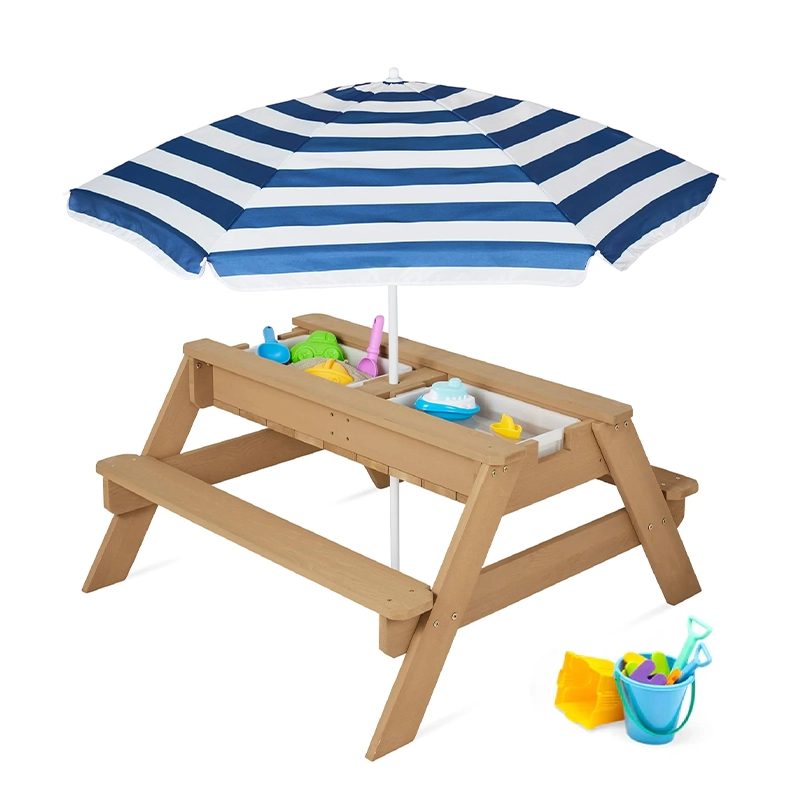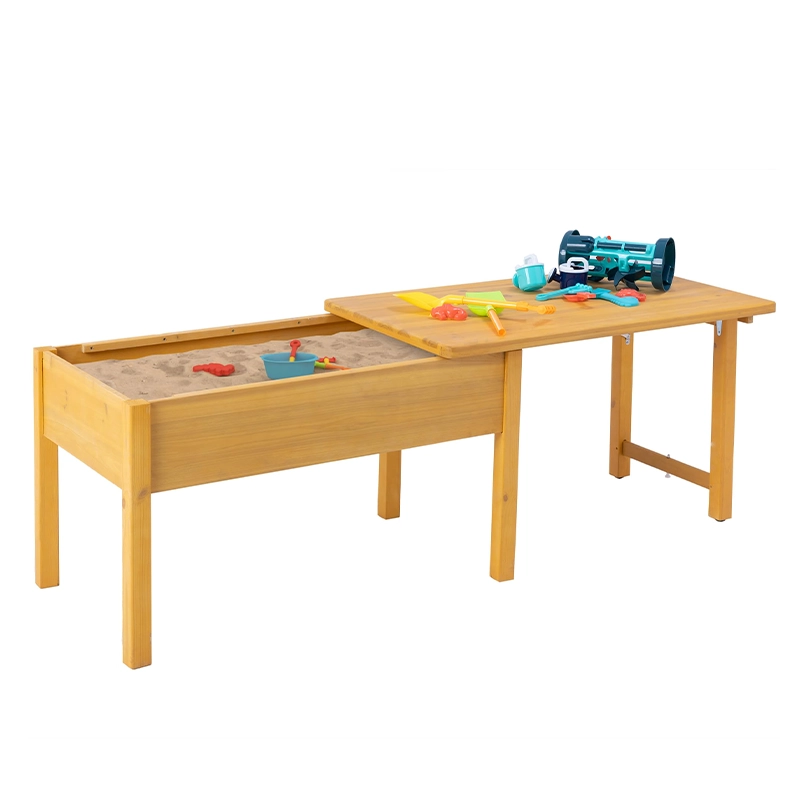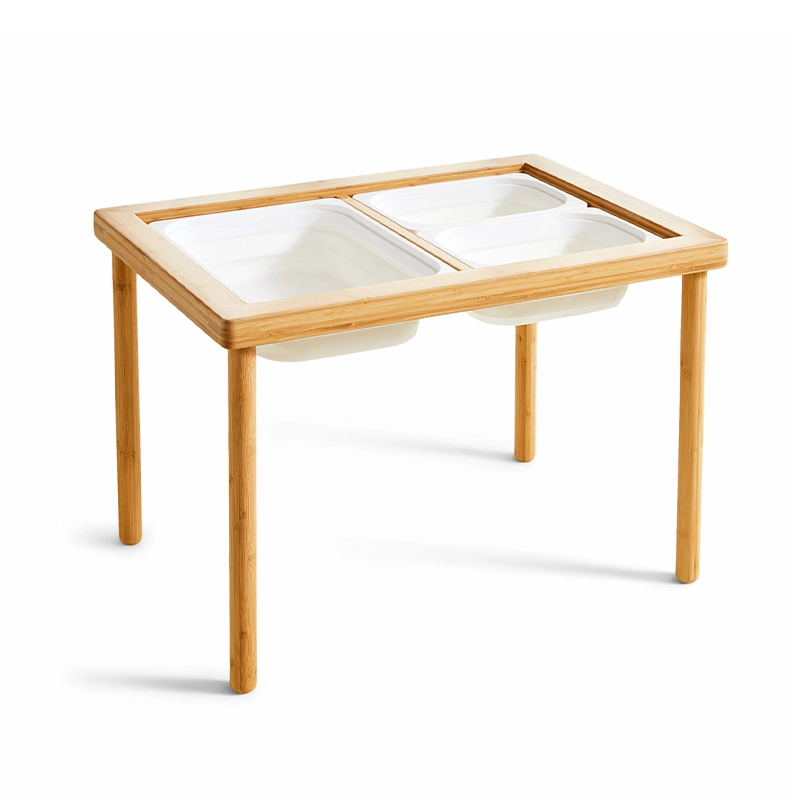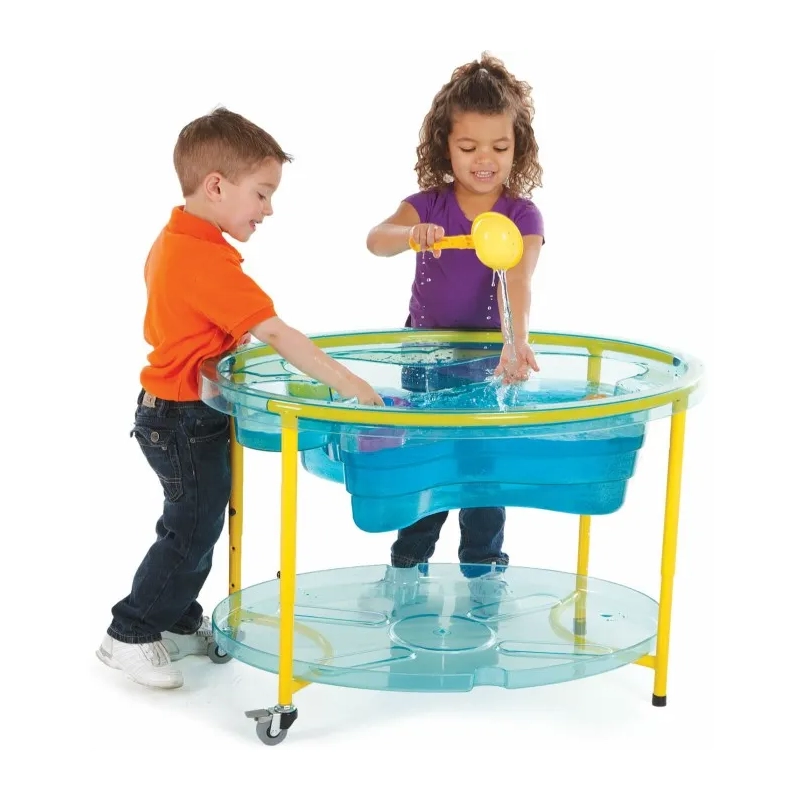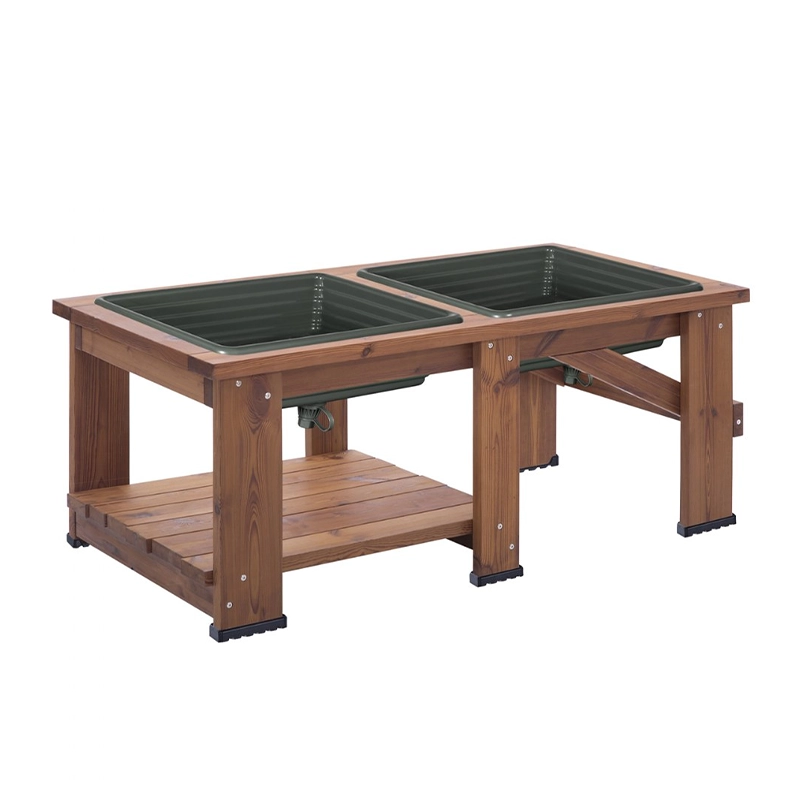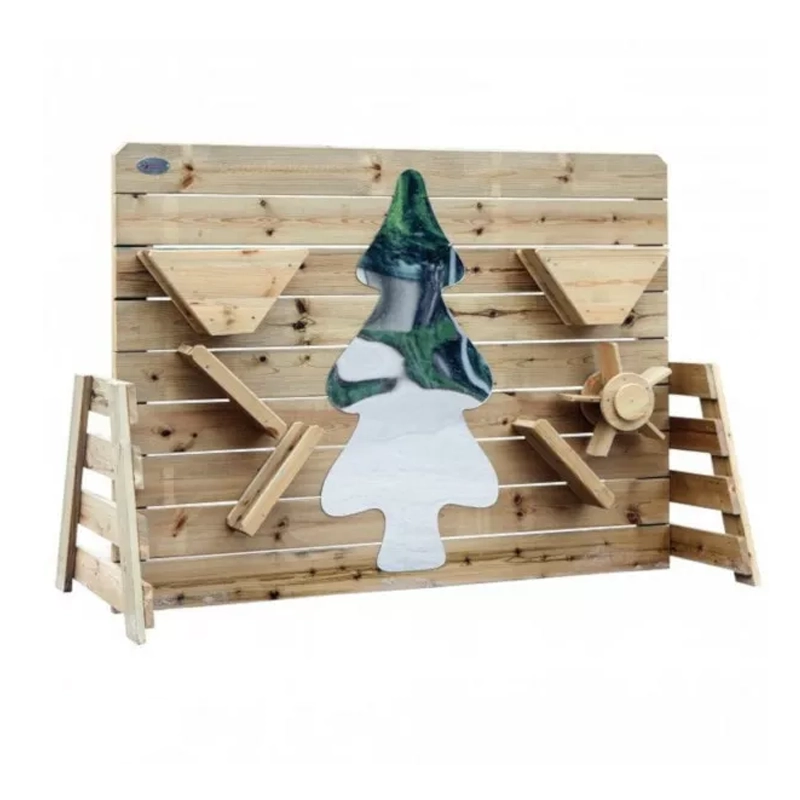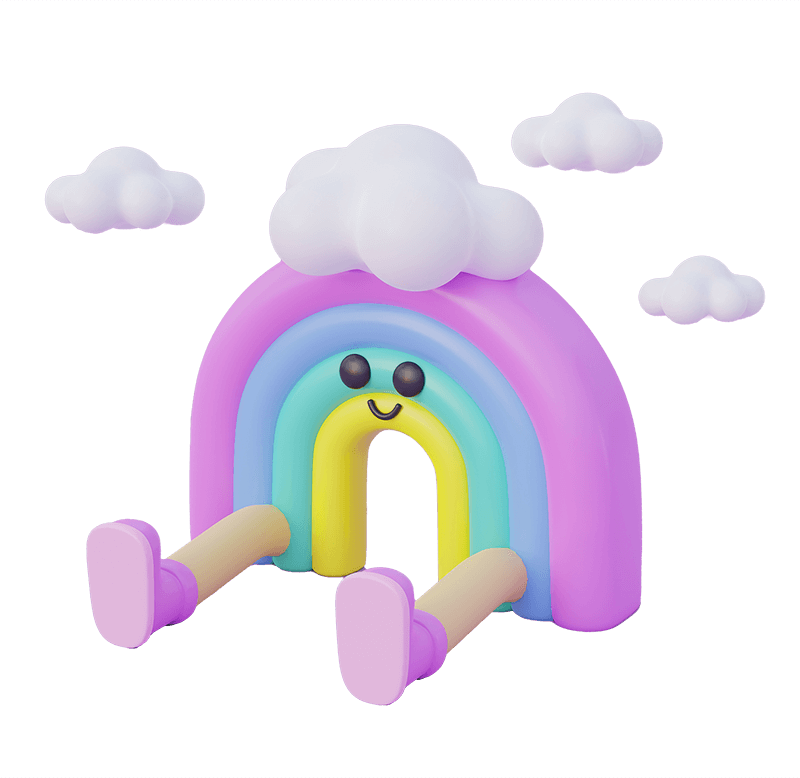
Xiha Toy
Sand & Water Play Area
At Xiha Toy, we are committed to enriching children’s classrooms through play, and the Sand & Water Play Area goes beyond the sandbox to bring a play experience that meets the needs of youngsters. Through sand and water play, children are encouraged to manipulate the most basic elements of their environment to create a new, inclusive and educational learning environment.
Explore our range of outdoor play products, from dynamic playground sets to educational toys, all designed to promote learning through play.
Introducing Our Premier Sand & Water Play Area
Our Sand & Water Play Area is meticulously designed for children aged specific age range, providing a perfect blend of fun and learning. This interactive playset not only sparks creativity and imagination but also enhances fine motor skills and encourages cooperative play among children.
Xiha Toy:Leading Manufacturer and Supplier of Nursery Furniture
Xiha Toy has over 20 years of experience in the children’s playground industry. We understand the nuances of child development and design our products to cater to children’s fun and educational needs.
Our dedication to quality and innovation has made us a leader in the playground industry. That’s why countless schools, parks, and families trust us to provide the best play experience possible.
We believe every school has unique needs. Our team works closely with you to customize a play area that fits your specific space and budget requirements, ensuring maximum impact and satisfaction.
We champion inclusive play and design accessible play areas for children of all abilities to ensure no one is left behind.
We use only the finest materials for our sand and water play areas, focusing not only on safety but also on sustainability to ensure that they stand the test of time and nature.

High-Density Polyethylene (HDPE)
Used for manufacturing water tables and other water-resistant structures, widely chosen for its weather resistance and durability.

Stainless Steel
Used for making faucets, water pumps, and other water-related facilities, prized for its corrosion resistance and durability.

PVC Piping
Used to build water channels, inexpensive and easy to assemble and maintain.

Commercial Play Sand or Natural Sand
Sifted and cleaned, suitable for children's sand play.
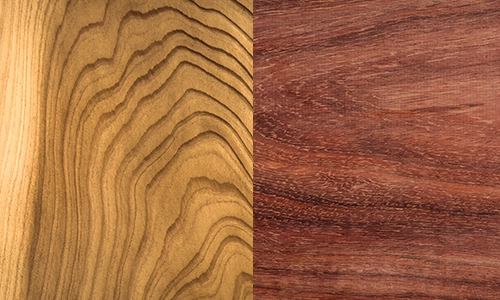
Wood (such as cedar or redwood)
Naturally rot-resistant, used for constructing sandbox borders or sand tables.

Rubber Mats or Tiles
Provide a non-slip surface, used for the flooring of the play area to enhance safety and prevent slipping.

Shade Materials
Such as polyester or acrylic fabrics, used for making canopies or umbrellas to protect children from sun exposure.

Recycled Plastic
Used for making toys and play equipment, environmentally friendly and durable.
What is the Sand & Water Play Area?
What Are the Key Elements of an Effective Sand & Water Play Area?
Safety First: How can we ensure the play area is safe for all children?
Material Selection: Which materials are best suited for durability and safety?
Design and Layout: How can we maximize space for optimal play and learning?
Accessibility: How do we make the play area inclusive for children with disabilities?
Maintenance: What are the best practices for maintaining a clean and safe environment?
Educational Value: How can we incorporate educational elements into the play area?
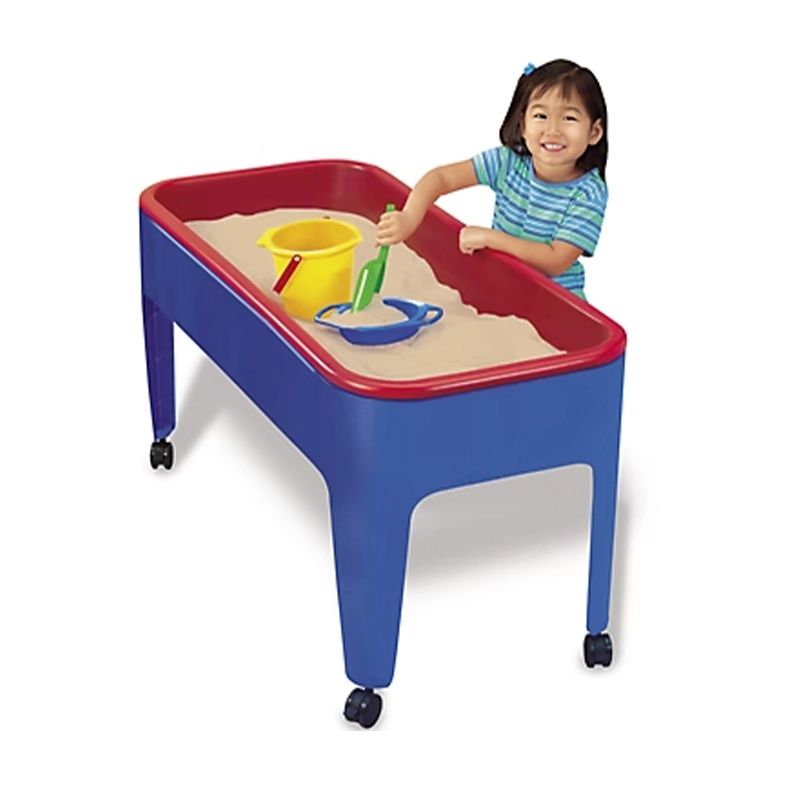
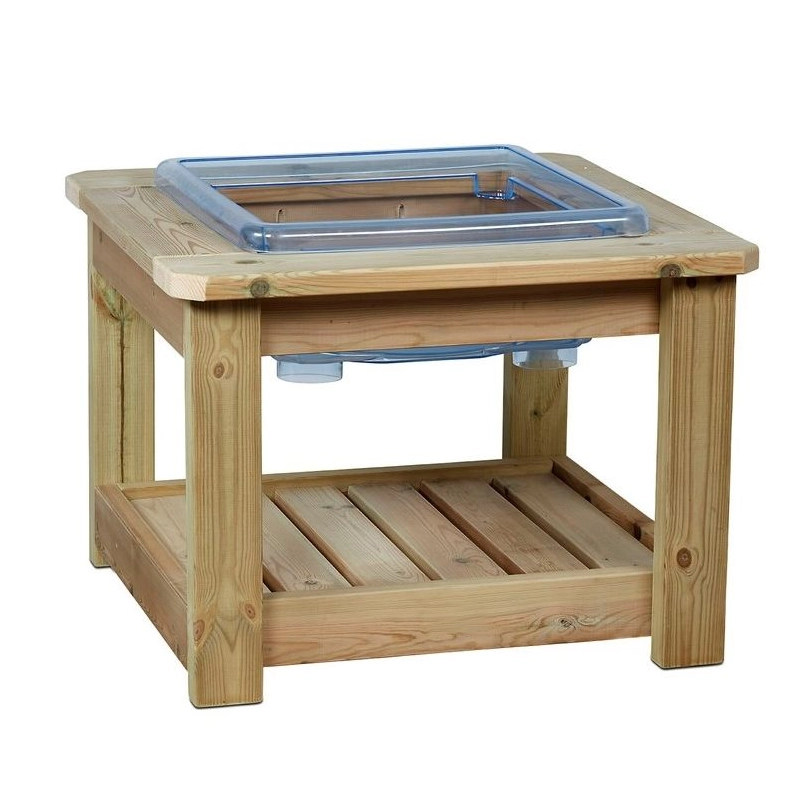
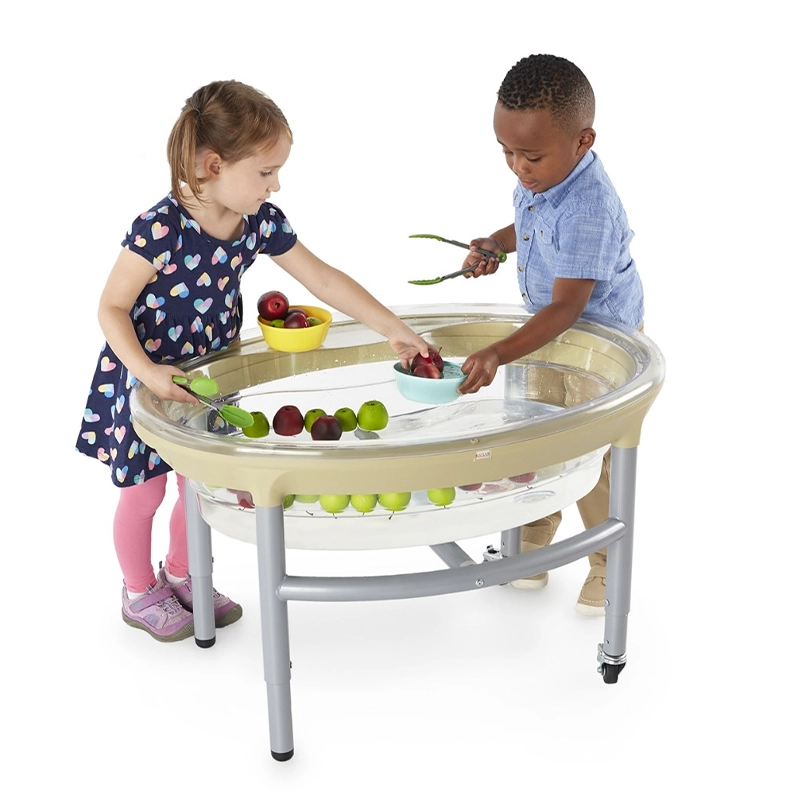

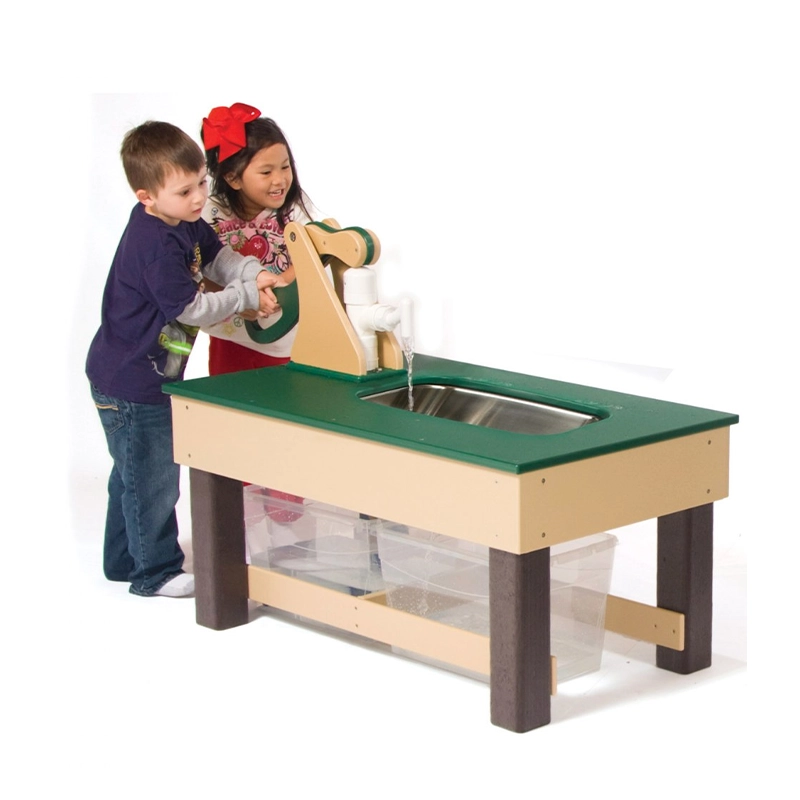
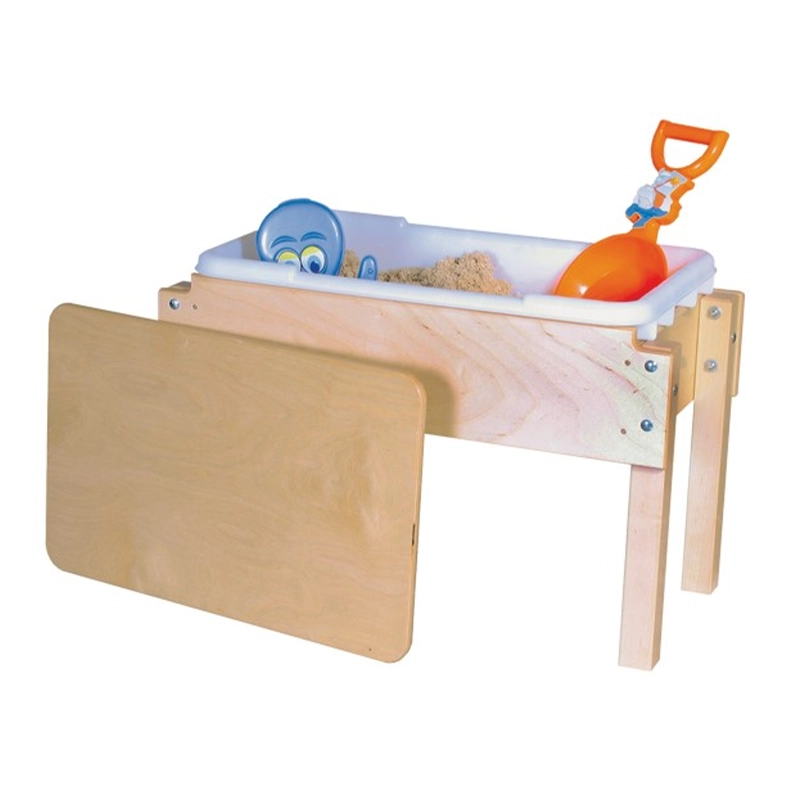
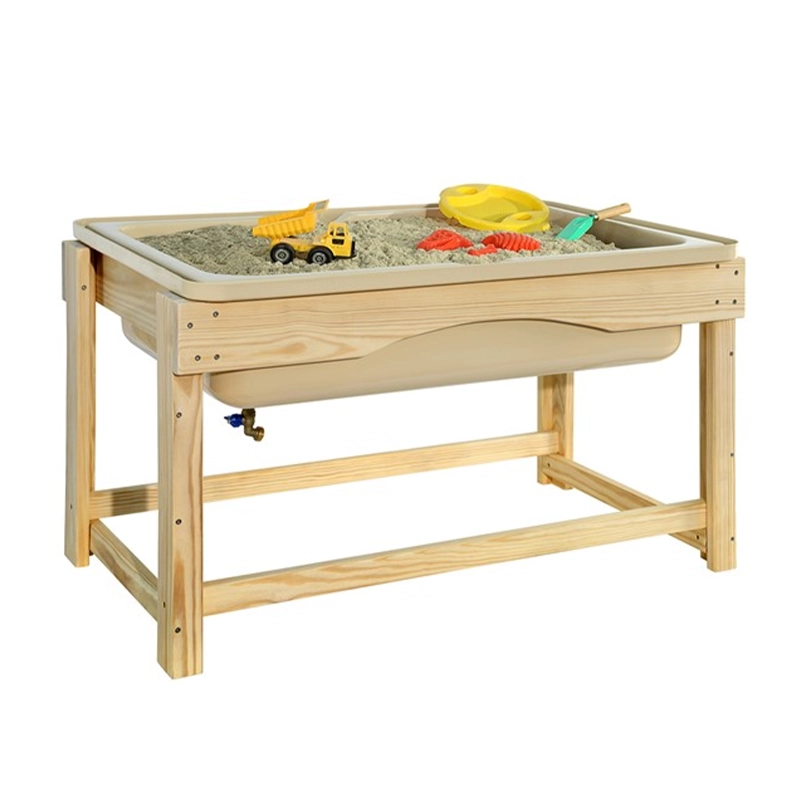


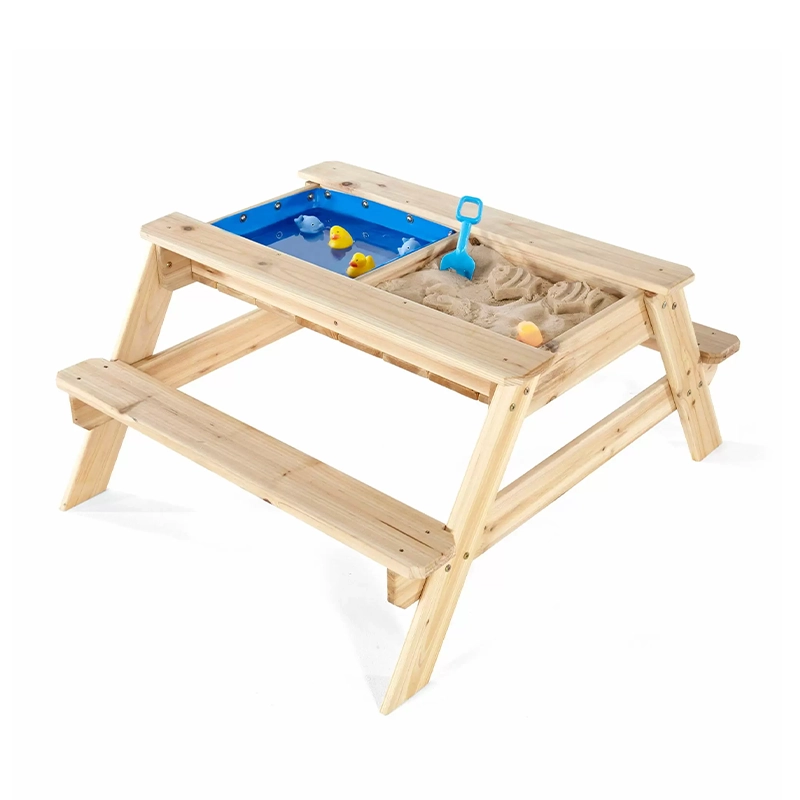
Things to note about sand & water play areas
Features of Sand & Water Play Areas
What do children learn in the Sand & Water Play Areas?
In the sand and water play area, children learn various skills and concepts fundamental to their development. Here are some key areas of learning facilitated by playing in these environments:
Sensory Skills
Motor Skills
Cognitive Development
Mathematical Skills
Language Skills
Social and Emotional Development
Creativity and Imagination
Environmental Awareness
Sand & Water Play Areas Materials
Choosing the right equipment is crucial for designing a fun and educational sand and water play area. This equipment should entertain children and help them develop their physical, cognitive, and social skills. Here’s a list of typical equipment and features you might consider including in sand & water play areas:

Sandboxes or Sand Pits

Sand Tables

Molding Tools

Sieving Equipment

Water Tables
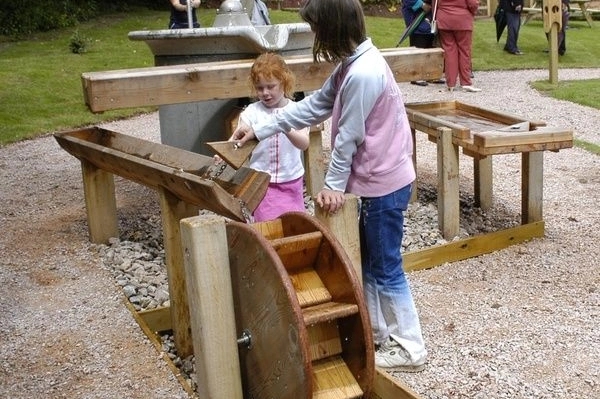
Water Wheels

Pipes and Guttering

Fountains
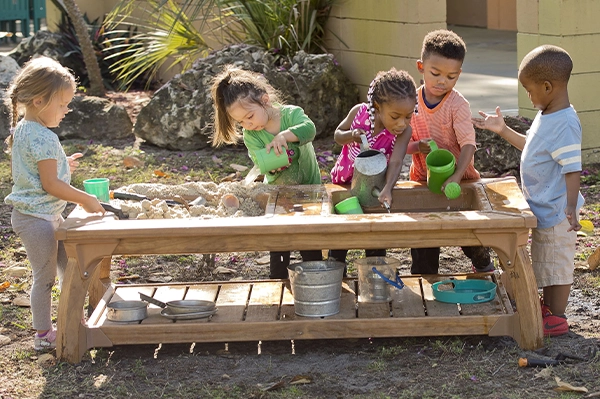
Play Stations

Boats and Floating Toys

Bridges and Channels
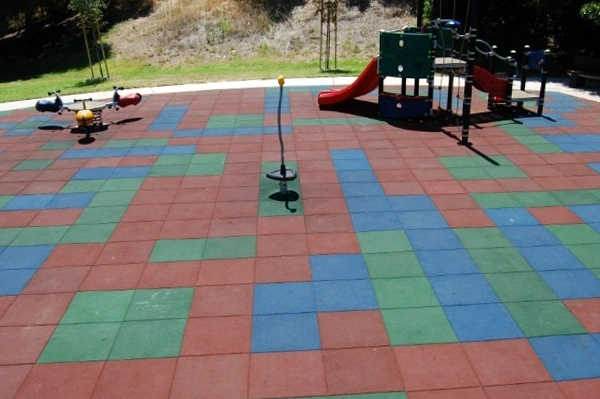
Non-Slip Flooring

Adjustable Components

Shade Structures

Benches and Seating
Sand Play Materials
- Natural Beach Sand
- Play Sand
- Kinetic Sand
- Colored Sand
- Shovels and Spades
- Buckets and Containers
- Rakes
- Molds
Water Play Materials
- Water Tables
- Basins and Tubs
- Buckets and Pails
- Scoops and Ladles
- Funnels, Sieves, and Colanders
- Watering Cans
- Floating Toys
How can teachers encourage Sand & Water Play in the classroom?
Incorporating sand and water play into the classroom can greatly benefit children's learning and development. Teachers can encourage this type of play by creating an engaging, educational, and safe environment. Here are some strategies teachers can use to promote sand and water play in the classroom:
Create Defined Play Areas
Set up specific areas for sand and water play within the classroom or school. These areas should be easily accessible and equipped with materials and tools.
Provide a Variety of Tools and Materials
Offer a diverse range of tools and materials for children to explore in the sand and water areas.
Facilitate Social Skills
Use sand and water play to develop social skills. Encourage children to work together in small groups, share materials, and negotiate roles.
Organize Themed Activities
Plan themed activities that capture the interests of the children, like pirates, underwater exploration, or beach parties.

Integrate Curriculum Goals
Connect sand and water play to broader educational objectives. For example, teach mathematical concepts like volume and measurement or science topics like properties of materials.
Encourage Exploration and Experimentation
Foster an environment where children feel free to experiment and explore. Ask open-ended questions to provoke thought and curiosity.
Observe and Document Learning
Actively observe the children as they play and document their progress. This can inform future planning and highlight the educational value of sand and water play.
Offer Guidance When Needed
While it's important to let children lead their exploration, timely adult guidance can help deepen their understanding and skills.
How should I maintain a Sand & Water Play Areas?
Regular Equipment Checks
Clean and Replace Sand
Change Water Frequently
Sanitization
Cover the Area
How can teachers encourage Sand & Water Play in the classroom?
Incorporating sand and water play into the classroom can greatly benefit children's learning and development. Teachers can encourage this type of play by creating an engaging, educational, and safe environment. Here are some strategies teachers can use to promote sand and water play in the classroom:
For Toddlers (Ages 1-3)
- Sensory Development: At this age, children are exploring their world primarily through their senses. Sand and water play helps them develop touch and sensory skills as they feel different textures and temperatures.
- Simple Play Equipment: Shallow water basins, small buckets, simple spades, and basic water toys are ideal as they are easier for small hands to manipulate and less overwhelming.
For Preschoolers (Ages 3-5)
- Motor Skills Development: Preschoolers are developing fine motor skills and coordination. Equipment like water tables, more complex sand molds, and interactive features like pumps or channels support this development.
- Imaginative Play: This age group is highly imaginative. Providing themed play areas, like pirate ships or castle molds, can enhance their creative play and storytelling.
For School-Aged Children (Ages 5-8)
- Educational Opportunities: Older children can handle more complex activities. They can engage in experiments such as exploring how water flows through different materials or learning about volume and capacity.
- Advanced Equipment: Tools that allow building elaborate structures in sand or creating intricate water systems can challenge older children and keep them engaged.
How to foster interaction between children in the sand & water play areas?
Fostering interaction between children in sand and water play areas can significantly enhance their social skills and encourage cooperative play. Here are several strategies to promote interaction and collaboration among children in these settings:
Design for Collaboration
Introduce Cooperative Tools and Toys
Organize Group Activities
Role Play and Themed Play
Provide Guidance and Encouragement
How to integrate the theme into the design of the sand & water play areas to enhance the play experience?
Integrating a theme into the sand and water play area design can significantly enhance the play experience by stimulating children's imaginations and making the environment more engaging and exciting. Here are some strategies to effectively incorporate themes:
1. Choose a Captivating Theme
Select a theme that resonates with children’s interests and can spark their creativity. Popular themes for sand and water play areas include:
Pirate Adventures: Featuring treasure chests, pirate ships, and flags.
Under the Sea: Incorporating elements like sea creatures, mermaids, submarines, and coral reefs.
Beach Fun: Mimicking a beach setting with umbrellas, beach balls, and surfboards.
Jungle Safari: Using elements like waterfalls, animals, and jungle foliage.
2. Use Themed Decor and Colors
Decorate the play area with colors and patterns that reflect the chosen theme. For a beach theme, use bright blues and sandy yellows. For a jungle theme, incorporate greens and earth tones. Add themed signage, flags, or banners to enhance the atmosphere.
3. Utilize Themed Play Equipment
Select or create play equipment that fits the theme:
Pirate theme: Use barrels, nets, and telescopes as play tools.
Under the sea theme: Offer sand molds in the shape of fish and other marine life, and use pipes that mimic water currents.
4. Themed Activities and Games
Develop activities that reinforce the theme:
For a beach theme, set up a sandcastle building contest.
For a jungle theme, organize a treasure hunt with hidden animals or treasures in both sand and water areas.
5. Themed Costumes and Props
Provide costumes and props that children can use to get into character:
Pirate hats, eye patches, and vests for a pirate theme.
Goggles, snorkels, and fins for an under the sea theme.








